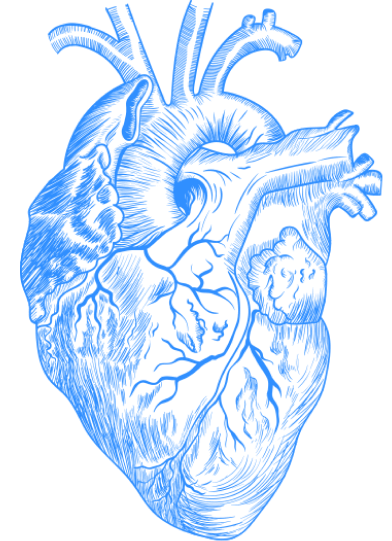
There was a crowd of security guards, physicians, and nurses in an ED room. The patient inside squirmed and writhed on the stretcher while sweating profusely, soaking his clothing and the hospital bed. Though slender and slightly cachectic, the patient had fought off the security entourage multiple times, like a snake slipping from their grasp, violently twisting and turning his body. As he struggled, a nurse tore off the sleeve of the patient’s dark blue jumpsuit in order to get IV access and administer medications. The 26-year-old man kept his eyes wide open and stared at the ceiling, which made it easy for me to see his tremendously large and dilated pupils, empty and frightening at once. Seven security guards held him down when the nurse started the IV.
All this went on for about an hour, and as the time passed the monitor above the patient’s bed, which projected his temperature, blood pressure, and heart rate, changed. The temperature rose: 99…100…101…102…. The heart rate went up to 120 (a heart rate above 100 is considered fast and is called tachycardia). The blood pressure, too, rose to 160/100 (normal is approximately 120/80). And the patient continued to sweat and writhe. As he exerted himself, his cells produced molecules necessary for energy, a process which generates heat and increases heart rate and blood pressure.
The patient was experiencing a PCP, or Phencyclidine, overdose. PCP is a drug that was developed in the early twentieth century as an anesthetic. However, the drug also caused delusions, anxiety, and agitation and was eventually discontinued because of these side effects. In the 1960s, many drug addicts used it illegally in pill and smoke form. Because PCP acts partially among dopamine receptors in the brain it can cause both euphoric and, sometimes, psychotic and violent behavior. On medical licensing exams we are expected to recognize the typical PCP symptoms: violent behavior, dilated pupils, profuse sweating and tachycardia. Additionally, the drug can cause seizures, hyperthermia (very high body temperatures), severe hypertension or high blood pressure – which can damage the eyes, kidney, and brain as well as other organs – and rhabdomyolysis, the breakdown of muscle, which can cause further kidney damage. Unfortunately, no medication exists to reverse the drug once it’s been ingested and treament primarily targets only a patient’s symptoms.
The resident started treating this particular patient with a type of benzodiazepine, a sedative drug that acts on receptors in the brain to inhibit anxiety and agitation. This class of medications is frequently used for patients who have prolonged seizures, severe anxiety, or difficulty sleeping. After multiple doses of benzodiazepines over the course of the hour, as well as IV fluids to counteract possible rhabdomyolysis, the patient continued to fight and his temperature continued to rise. It was almost as if he had not been given any medication at all.
At this point, the only option was to use drugs to knock the patient out completely, or paralyze him, so that he would stop struggling and his vital signs would normalize. To ensure the paralytic drugs do not prevent the patient from breathing, a tube is placed down his throat, keeping the airway open. The resident injected the paralytic into the IV, and once it took effect he used a glidescope to pry open the patient’s throat in order to visualize the airway. Then, he stuck a short plastic tube down into the trachea. The hollow tube allows oxygen to pass into the trachea thus acting as the patient’s mouth and throat. The tube is then connected to a ventilator that pumps air into the lungs and thus keeps the patient oxygenated. A great video of this procedure with narration is available here.
This last ditch effort worked. Over the next few hours, the patient’s temperature and blood pressure dropped and he avoided the dangerous sequelae of his toxic ingestion. Although curious to see what would happen to him next, my rotation ended before the patient was admitted to the hospital and I went home to sleep off the overnight shift.

Having enjoyed these last two piece on overdose, they've made me wonder what the public health implications of widespread marijuana legalization will be on non-marijuana overdoses? Will marijuana dependence preclude wider experimentation or will it become a socially sanctioned "gateway drug" that will make these dangerous overdoses more common? I would be very interested in Dr. Rothstein's thoughts on this topic.